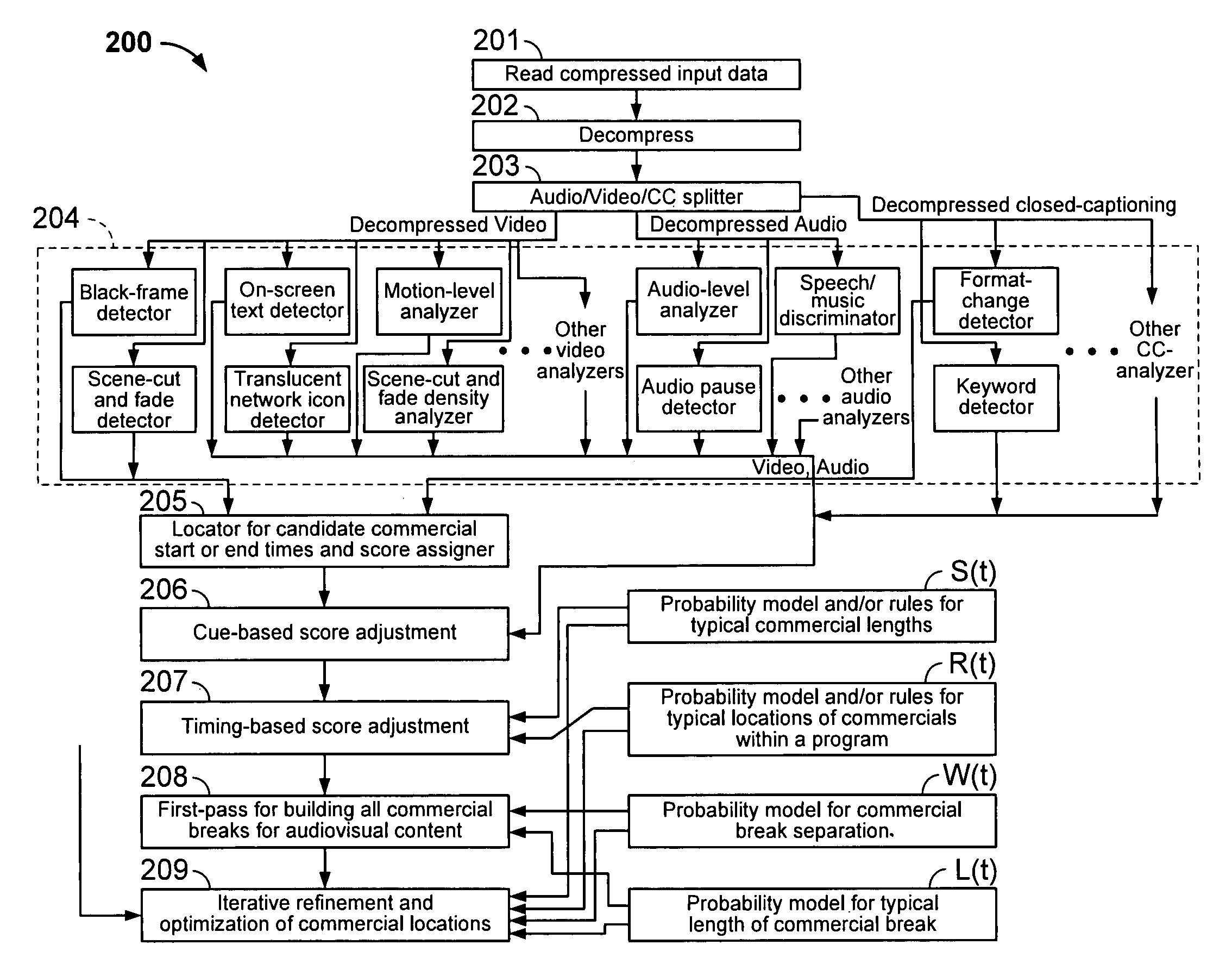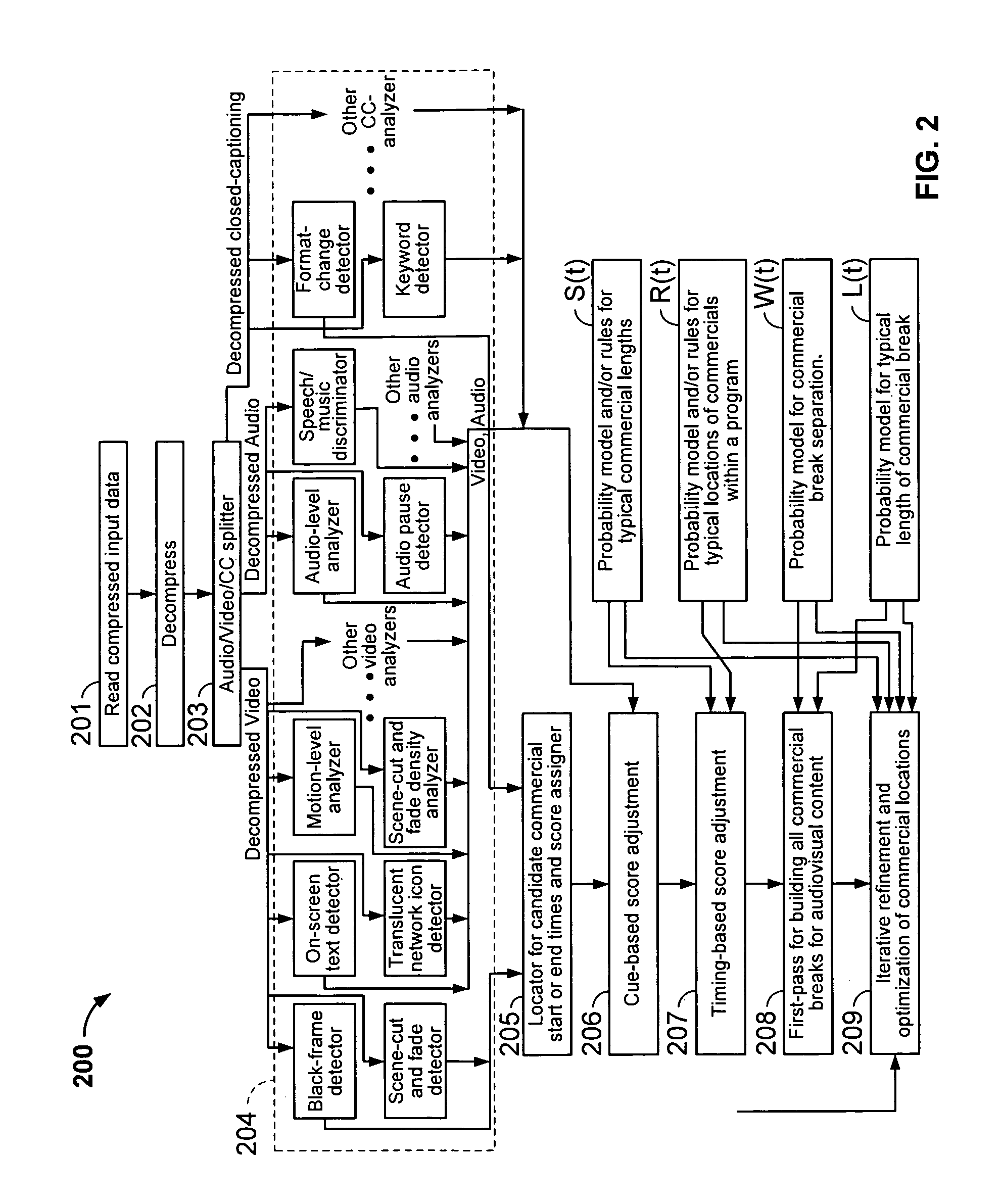Iterative, maximally probable, batch-mode commercial detection for audiovisual content
a commercial detection and batch-mode technology, applied in the field of iterative, maximally probable, batch-mode commercial detection for audiovisual content, can solve the problems of error remains uncorrected, and none of the previous approaches have any sort of double-checking or error recovery, so as to improve the accuracy of commercial location decisions and achieve superior results.
- Summary
- Abstract
- Description
- Claims
- Application Information
AI Technical Summary
Benefits of technology
Problems solved by technology
Method used
Image
Examples
Embodiment Construction
[0021]FIG. 1 is a flow chart of a method 100 according to the invention for detecting one or more commercial breaks in a set of audiovisual content, each commercial break including one or more commercials. The method 100 identifies starting and ending times for each commercial break, as well as starting times for each commercial within a commercial break.
[0022]In step 101 of the method 100, the data representing the audiovisual content (including closed-captioning or other transcription data, if applicable) is analyzed to identify the presence of one or more predetermined types of cues. The location and duration of each cue (i.e., the beginning and ending times of each cue) can be determined. Other characteristics of the cues can be determined as well. Examples of the types of cues that can be identified are discussed in more detail below.
[0023]In step 102 of the method 100, the cues are analyzed to identify possible locations of commercial beginnings or endings (candidate times) wi...
PUM
 Login to View More
Login to View More Abstract
Description
Claims
Application Information
 Login to View More
Login to View More - R&D
- Intellectual Property
- Life Sciences
- Materials
- Tech Scout
- Unparalleled Data Quality
- Higher Quality Content
- 60% Fewer Hallucinations
Browse by: Latest US Patents, China's latest patents, Technical Efficacy Thesaurus, Application Domain, Technology Topic, Popular Technical Reports.
© 2025 PatSnap. All rights reserved.Legal|Privacy policy|Modern Slavery Act Transparency Statement|Sitemap|About US| Contact US: help@patsnap.com



